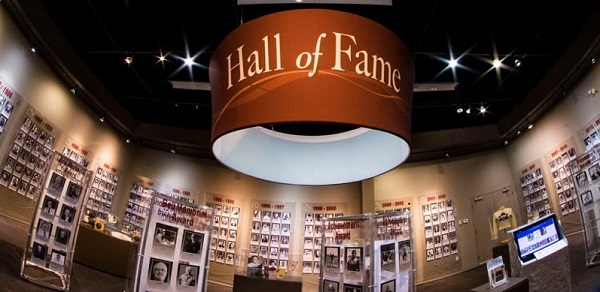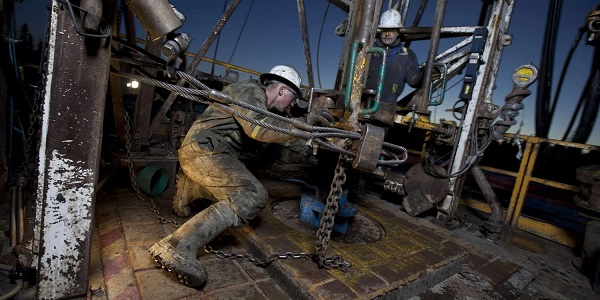Uncategorized
The Amazon of its day, Sears’ woes were years in the making

Before there was Amazon — or, for that matter, Home Depot or Walmart or Kmart — there was Sears.
From its beginnings as a mail-order watch business in Minneapolis 132 years ago, the company grew to become America’s everything-under-one-roof store and the biggest retailer in the world.
For generations of Americans, the brick-like Sears, Roebuck and Co.
“It was the Amazon of its day,” said Mark Cohen, a professor of retailing at Columbia University and a former Sears executive.
But how the mighty have fallen: Plagued by falling sales and heavy debt, Sears filed for Chapter 11 bankruptcy reorganization Monday and announced plans to close 142 of its roughly 700 remaining stores and eliminate thousands of jobs in a bid to stay afloat, if only for a while.
Analysts have their doubts it will survive.
“In our view, too much rot has set in at Sears to make it (a) viable business,” Neil Saunders, managing director of GlobalData Retail, said in a note to investors.
Its bankruptcy was years in the making. Sears diversified too much. It kept cutting costs and let its stores become fusty in the face of increasing competition from the likes of Walmart and Target. And though it expanded onto the Internet, it was no match for Amazon.
“In point of fact,” Cohen said, “they’ve been dead for a very long time.”
In its bankruptcy filing, Sears Holdings, which operates both Sears and Kmart stores, listed assets of $1 billion to $10 billion and liabilities of $10 billion to $50 billion. It said it has lined up $300 million in financing from banks to keep operating and is negotiating an additional $300 million loan.
The company once had around 350,000 employees; as of Monday’s filing, it was down to 68,000. At its peak, it had 4,000 stores in 2012; it will now be left with a little more than 500.
Sears was born in 1886, when Richard W. Sears began selling watches to supplement his income as a railroad station agent in North Redwood, Minnesota. By the next year, he had opened his first store in Chicago and had hired a watchmaker named Alvah C. Roebuck.
The company published its first mail-order
“It’s hard to imagine now how isolating it was to live in a small town 100 years ago, 120 years ago,” said Marc Levinson, author of “The Great A&P and the Struggle for Small Business in America.” ”Back before the days of cars, people might have a ride of several days in a horse and buggy just to get to the nearest train railhead, nearest train station.”
“What Sears did was make big-city merchandise available to people in small towns,” he said.
There was a time when you could find just about anything for your house in the Sears
Sears’ offerings could cover you from cradle to grave: It even sold tombstones. In between, there was everything from girdles to socket wrenches, dresses to guns, dolls to washing machines.
The Sears
When the new one would arrive, Gurganus said, the old one was consigned to the outhouse as reading material and, well, toilet paper. He said they always started at the back of the book when pulling out pages.
“That’s where the least important parts are — the plumbing fixtures and so forth,” he said with a laugh. “I was especially interested in the underwear ads.”
Gurganus uses the
For generations, Sears was an innovator in practically every area, including home delivery, product-testing laboratories and employee profit-sharing. When post-World War II prosperity led to the growth of suburbia, Sears was well-positioned to cash in on another major development — the shopping mall.
By the late 1960s, Sears was the world’s largest retailer. In 1975, it completed the black Sears Tower, which at 1,450 feet (442
Between 1981 and 1985, the company went on a spending spree, acquiring the stock brokerage Dean Witter Reynolds and the real estate company Coldwell, Banker. It launched the Discover credit card nationwide.
“They diverted all of their retail cash flow into other enterprises,” Cohen said. “And the retail business had come apart at the seams.”
Sears eventually got rid of those businesses. And to save money and generate capital, it sold off some of its most familiar brands, Craftsman and DieHard among them. In 1993, it killed the general merchandise
Sears introduced its popular “Come see the softer side of Sears” ad campaign in 1993 and had a turnaround starting in the mid- to late 1990s, but it didn’t last long.
Hedge fund manager Eddie Lampert bought the company in 2005 and created Sears Holdings Corp. He began cutting expenses and selling off real estate, but the hemorrhaging continued.
Retail historian Vicki Howard, author of “From Main Street to Mall: The Rise and Fall of the American Department Store,” said Sears was too slow to adapt as consumers drifted away from the malls and more toward online shopping and big-box stores farther out in the suburbs.
Levinson said that for too long, Sears catered to “a broad middle market” and failed to change with the times.
“There are a lot of stores specializing in particular parts of the market, and no longer very many stores that are seeking to serve everyone,” he said. “And so Sears was stuck there in the middle at a time when the market was fragmenting.”
Eventually, Cohen said, Sears will disappear.
“It’s an American tragedy,” he said. “It did not have to be this way.”
___
Breed contributed to this report from Raleigh, North Carolina, D’Innocenzio from New York.
Allen G. Breed And Anne D’Innocenzio, The Associated Press
Uncategorized
Cost of bureaucracy balloons 80 per cent in 10 years: Public Accounts

The cost of the bureaucracy increased by $6 billion last year, according to newly released numbers in Public Accounts disclosures. The Canadian Taxpayers Federation is calling on Prime Minister Mark Carney to immediately shrink the bureaucracy.
“The Public Accounts show the cost of the federal bureaucracy is out of control,” said Franco Terrazzano, CTF Federal Director. “Tinkering around the edges won’t cut it, Carney needs to take urgent action to shrink the bloated federal bureaucracy.”
The federal bureaucracy cost taxpayers $71.4 billion in 2024-25, according to the Public Accounts. The cost of the federal bureaucracy increased by $6 billion, or more than nine per cent, over the last year.
The federal bureaucracy cost taxpayers $39.6 billion in 2015-16, according to the Public Accounts. That means the cost of the federal bureaucracy increased 80 per cent over the last 10 years. The government added 99,000 extra bureaucrats between 2015-16 and 2024-25.
Half of Canadians say federal services have gotten worse since 2016, despite the massive increase in the federal bureaucracy, according to a Leger poll.
Not only has the size of the bureaucracy increased, the cost of consultants, contractors and outsourcing has increased as well. The government spent $23.1 billion on “professional and special services” last year, according to the Public Accounts. That’s an 11 per cent increase over the previous year. The government’s spending on professional and special services more than doubled since 2015-16.
“Taxpayers should not be paying way more for in-house government bureaucrats and way more for outside help,” Terrazzano said. “Mere promises to find minor savings in the federal bureaucracy won’t fix Canada’s finances.
“Taxpayers need Carney to take urgent action and significantly cut the number of bureaucrats now.”
Table: Cost of bureaucracy and professional and special services, Public Accounts
| Year | Bureaucracy | Professional and special services |
|
$71,369,677,000 |
$23,145,218,000 |
|
|
$65,326,643,000 |
$20,771,477,000 |
|
|
$56,467,851,000 |
$18,591,373,000 |
|
|
$60,676,243,000 |
$17,511,078,000 |
|
|
$52,984,272,000 |
$14,720,455,000 |
|
|
$46,349,166,000 |
$13,334,341,000 |
|
|
$46,131,628,000 |
$12,940,395,000 |
|
|
$45,262,821,000 |
$12,950,619,000 |
|
|
$38,909,594,000 |
$11,910,257,000 |
|
|
$39,616,656,000 |
$11,082,974,000 |
Uncategorized
Trump Admin Establishing Council To Make Buildings Beautiful Again


From the Daily Caller News Foundation
By Jason Hopkins
The Trump administration is creating a first-of-its-kind task force aimed at ushering in a new “Golden Age” of beautiful infrastructure across the U.S.
The Department of Transportation (DOT) will announce the establishment of the Beautifying Transportation Infrastructure Council (BTIC) on Thursday, the Daily Caller News Foundation exclusively learned. The BTIC seeks to advise Transportation Secretary Sean Duffy on design and policy ideas for key infrastructure projects, including highways, bridges and transit hubs.
“What happened to our country’s proud tradition of building great, big, beautiful things?” Duffy said in a statement shared with the DCNF. “It’s time the design for America’s latest infrastructure projects reflects our nation’s strength, pride, and promise.”
“We’re engaging the best and brightest minds in architectural design and engineering to make beautiful structures that move you and bring about a new Golden Age of Transportation,” Duffy continued.
Mini scoop – here is the DOT’s rollout of its Beautifying Transportation Infrastructure Council, which will be tasked with making our buildings beautiful again. pic.twitter.com/
9iV2xSxdJM — Jason Hopkins (@jasonhopkinsdc) October 23, 2025
The DOT is encouraging nominations of the country’s best architects, urban planners, artists and others to serve on the council, according to the department. While ensuring that efficiency and safety remain a top priority, the BTIC will provide guidance on projects that “enhance” public areas and develop aesthetic performance metrics.
The new council aligns with an executive order signed by President Donald Trump in August 2025 regarding infrastructure. The “Making Federal Architecture Beautiful Again” order calls for federal public buildings in the country to “respect regional architectural heritage” and aims to prevent federal construction projects from using modernist and brutalist architecture styles, instead returning to a classical style.
“The Founders, in line with great societies before them, attached great importance to Federal civic architecture,” Trump’s order stated. “They wanted America’s public buildings to inspire the American people and encourage civic virtue.”
“President George Washington and Secretary of State Thomas Jefferson consciously modeled the most important buildings in Washington, D.C., on the classical architecture of ancient Athens and Rome,” the order continued. “Because of their proven ability to meet these requirements, classical and traditional architecture are preferred modes of architectural design.”
The DOT invested millions in major infrastructure projects since Trump’s return to the White House. Duffy announced in August a $43 million transformation initiative of the New York Penn Station in New York City and in September unveiledmajor progress in the rehabilitation and modernization of Washington Union Station in Washington, D.C.
The BTIC will comprise up to 11 members who will serve two-year terms, with the chance to be reappointed, according to the DOT. The task force will meet biannually. The deadline for nominations will end Nov. 21.
-

 Alberta2 days ago
Alberta2 days agoAlberta Sports Hall of Fame Announces Class of 2026 Inductees
-

 Business2 days ago
Business2 days agoCanada’s climate agenda hit business hard but barely cut emissions
-

 Business1 day ago
Business1 day agoCarney’s Toronto cabinet meetings cost $530,000
-

 Bruce Dowbiggin1 day ago
Bruce Dowbiggin1 day agoIntegration Or Indignation: Whose Strategy Worked Best Against Trump?
-

 Energy2 days ago
Energy2 days agoCanada following Europe’s stumble by ignoring energy reality
-

 Censorship Industrial Complex2 days ago
Censorship Industrial Complex2 days agoConservative MP Leslyn Lewis slams Liberal plan targeting religious exemption in hate speech bil
-

 Health2 days ago
Health2 days ago23,000+ Canadians died waiting for health care in one year as Liberals pushed euthanasia
-

 Artificial Intelligence2 days ago
Artificial Intelligence2 days agoAI is accelerating the porn crisis as kids create, consume explicit deepfake images of classmates










